

 March has been filled with some interesting trips for us. We have been in Hungary and tried a variety of Hungarian wines that impressed us a lot. We went there to see the very interesting wine fair VinCE in Budapest. You will soon see more reports on Hungarian wines and winemakers on BKWine Magazine. We were last there some ten years ago. A lot has happened in that time! We tasted many wines that surprised and impressed us.
March has been filled with some interesting trips for us. We have been in Hungary and tried a variety of Hungarian wines that impressed us a lot. We went there to see the very interesting wine fair VinCE in Budapest. You will soon see more reports on Hungarian wines and winemakers on BKWine Magazine. We were last there some ten years ago. A lot has happened in that time! We tasted many wines that surprised and impressed us.
We also had the pleasure to be invited to participate in the Hungarian wine magazine VinCE’s tasting panel. A very interesting exercise where we tasted a whole series of Hungarian rosés. Overall a very positive experience, which is not always the case for rosé tastings. You can read more about some good rosés in the Brief.
We have also been on tour, almost like a circus, with wine tastings in ten different cities and had some planning meetings for new and exciting book projects.
This week sees the start of the primeurs tastings in Bordeaux. It is the 2014 vintage that will be tasted and rated by wine merchants, importers and journalists from around the world.
There has been much discussion around the “primeurs” in recent years, that they will perhaps lose their significance and so on. It is too early to know. But what we do know is that buying Bordeaux wines en primeur, ie roughly two years before delivery, is a bit of a gamble. Price wise, it may pay sometimes, but not always. But buying en primeur is also a way for merchants to secure their allotment. The chateaux will publish their prices for the 2014 wines later in April or in May. Those prices will be an indication of how the estates perceive the market right now. Is the demand strong or not?
Meanwhile, there is a dawning sense of that the heydays of the “primeur circus” might be coming to an end. Some chateaux have started to take other routes to market and the interest from the market has been subdued in recent years.
We will see what happens in the future. An upheaval in the Bordeaux universe? Whatever happens there are many good wines made there, and often at very reasonable prices. Often far from the sometimes exorbitant prices that make headlines. Read about some good-buys tips in the Brief.
On our balcony our vines just started to show tiny buds. Soon it will be full speed in the vineyards. When the vine grows at most it is sometimes said that it can extend by almost 10 inches a day.
This also means that the spring travel season soon is on full speed too. Take a look at our programs. Maybe you’ll find something interesting, either on the spring or on the autumn programs!
Britt & Per
PS: Recommend to your friends to read the Brief!
What’s on at BKWine Tours
- Bordeaux, April 22-26
- Bordeaux, September 23-27
- Douro Valley, October 21-25
- Chile and Argentina in South America, February 6-21, 2016
- South Africa, March 2016
For more information please contact us on email or on phone (we’re on French time), or go to our wine travel site on www.bkwinetours.com!
We also make custom designed wine tours – on-demand tours for you and a group of friends, for your company (maybe to scout new winegrowers?), for a special event… We can combine winery visits and wine touring with other activities: gastronomic workshops, visit to an oyster farm, truffles hunting, cheese making, and more. More info on the custom designed and bespoke BKWine wine tours and travel here!
Wine tours in Finnish: We also do wine tours in Finnish. And in German, Norwegian, Spanish…
Do you want the latest news and updates on our wine travel activity? Subscribe here! (Second alternative BKWineTours.com)
From the World of Wine
Is the increase in grape sales to Champagne houses a reason to worry?
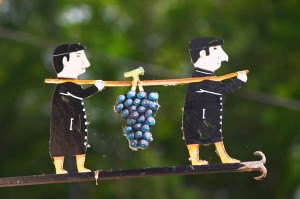 We have in recent years seen more and more champagnes made by small producers who own their own vineyards. But this trend seems to have been a little bit interrupted lately. Between 2008 and 2014 sales of grapes to the big Champagne houses increased with the equivalent of 2644 hectares.
We have in recent years seen more and more champagnes made by small producers who own their own vineyards. But this trend seems to have been a little bit interrupted lately. Between 2008 and 2014 sales of grapes to the big Champagne houses increased with the equivalent of 2644 hectares.
The association for young growers in Champagne (Le Groupe des Jeunes Vignerons de la Champagne) is worried about this development. The association is of the opinion that the growers should sell their grapes to a cooperative instead of the big houses. Otherwise the balance between the growers and the houses may be affected. In the long run, it is feared that it could cause a drop in grape prices. The French market is slow at the moment, which could be one reason that growers choose to sell their grapes instead of making their own champagne.
Read more about grape sales to the big champagne houses on lavigne-mag.fr.
Champagne Fleury Blanc de Noirs Brut | Britt’s Wine of the Month
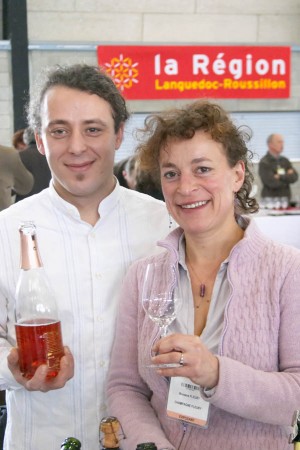 Champagne Fleury is one of the organic and biodynamic pioneers in Champagne. The family Fleury is found in the southernmost part of Champagne, in the Côte de Bar, famous for its high quality Pinot Noir grapes.
Champagne Fleury is one of the organic and biodynamic pioneers in Champagne. The family Fleury is found in the southernmost part of Champagne, in the Côte de Bar, famous for its high quality Pinot Noir grapes.
This blanc de noirs is made only from these Pinot Noir grapes. It is dry champagne that has a very generous and ripe fruit, good freshness and lovely citrus and apple notes. A full-bodied and elegant champagne that you can have both as an aperitif and with food. Very good value at 27 euro e.g. at the family’s own wine shop and wine bar in Paris, Cave Fleury. More: champagne-fleury.fr. [divider_flat]
Chaptalization or addition of concentrated grape must
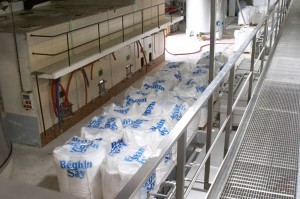 The biggest IGP appellation in France, the IGP Pays d’Oc, has allied itself with the two largest European manufacturers of concentrated grape must. Together they will fight against chaptalization and the unbalanced competition the they believe exist between the wine producers that are allowed to chaptalize (adding sugar) and the wine regions that instead add concentrated grape must to enrich their must. IGP Pays d’Oc requires that any addition of sucrose to the wine should be mentioned on the label.
The biggest IGP appellation in France, the IGP Pays d’Oc, has allied itself with the two largest European manufacturers of concentrated grape must. Together they will fight against chaptalization and the unbalanced competition the they believe exist between the wine producers that are allowed to chaptalize (adding sugar) and the wine regions that instead add concentrated grape must to enrich their must. IGP Pays d’Oc requires that any addition of sucrose to the wine should be mentioned on the label.
So, what’s the difference? In both cases the aim is to artificially increase the alcohol content of the wine. Sucrose, that is beet or cane sugar, is not naturally present in the wine. Proponents of concentrated grape must therefore consider this addition better because, although also undeniably sugar, it is sugar that occur naturally in the must. Northern regions of France, such as Champagne, are allowed to chaptalize while the southern regions, such as Languedoc, must use concentrated grape must if they want to enrich their musts. Beet sugar is less expensive and the previous subsidies for concentrated grape must have now been removed.
Our position is as it has always has been. We do not consider any enrichment of the must desirable and particularly not in southern France. Read more about the discussion of enrichment on lavigne-mag.fr.
Maltese wines from Maria Rosa
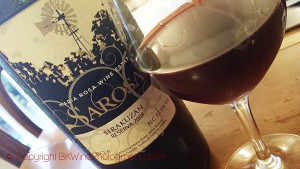 It is not surprising that they make wine in Malta. But you rarely see wines from there. They probably drink most of what they produce themselves on the island. And to be honest, the production is quite small. However, efforts are being made to revitalize the local wine industry.
It is not surprising that they make wine in Malta. But you rarely see wines from there. They probably drink most of what they produce themselves on the island. And to be honest, the production is quite small. However, efforts are being made to revitalize the local wine industry.
Malta is located just south of Sicily and has, of course, a warm and pleasant climate. The grapes ripen quickly and without problem. They grow French grape varieties but also some indigenous grapes, like Gellewza, Ghirghentina and Sirakuzan.
We recently tasted some wines from a winery named Maria Rosa Wine Estate. It is a small family winery with just over four hectares of vines. The grapes are Cabernet Sauvignon and Syrah and the local Sirakuzan. The warm and generous sun is very evident in the wines that are powerful with lots of ripe fruit. The oak character is a bit too dominating, we would prefer less. As always, it is interesting to try wines from the new regions/countries.
Some tasting notes:
Maria Rosa Wine Estate Cabernet Sauvignon 2008: Powerful and a bit heavy in style. Dark berries, a bit jammy and quite oaky. An unpretentious wine to drink with grilled meat.
Maria Rosa Wine Estate Sirakuzan Reserva 2008: Ripe dark fruit, some vanilla and chocolate on the nose. Quite a good structure. A pleasant wine. It would, however, benefit from less oak ageing.
Our wine tours in the press
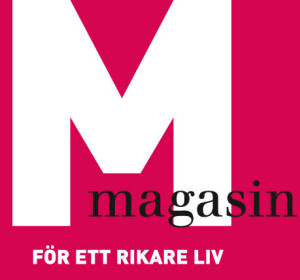 A friend spotted a press mention of our wine tours. It was the lifestyle glossy called M-Magasin that published a short text on our travel program Tank you M-Magasin and thank you Gun! They mentioned both our tours to Piedmont (with truffles and barolo) and to Sicily.
A friend spotted a press mention of our wine tours. It was the lifestyle glossy called M-Magasin that published a short text on our travel program Tank you M-Magasin and thank you Gun! They mentioned both our tours to Piedmont (with truffles and barolo) and to Sicily.
Do take a look at our scheduled wine tour program or our customised tour suggestions. Perhaps there is something that we can tempt you with? [divider_flat]
Valpolicella Classico Doc Rubinelli Vajol | Åsa’s Wine of the Month
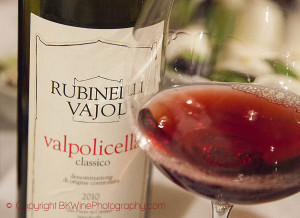 “Alread?” my husband asks and looks bewildered at the empty bottle. That’s how you feel when you open a really classic bottle of Valpolicella. Like this one from a producer called Rubinelli Vajol. Lots of fruit and cherries on the nose. Good acidity low in alcohol, only just over 12%. Very nice indeed. You empty the bottle without any effort. I think it is a good sign when you hear a surprised ”already?” when the bottle is finished.
“Alread?” my husband asks and looks bewildered at the empty bottle. That’s how you feel when you open a really classic bottle of Valpolicella. Like this one from a producer called Rubinelli Vajol. Lots of fruit and cherries on the nose. Good acidity low in alcohol, only just over 12%. Very nice indeed. You empty the bottle without any effort. I think it is a good sign when you hear a surprised ”already?” when the bottle is finished.
Rubinelli Vajol’s Valpolicella Classico is not a wine that dominates on the dining table. Some wines demand so much attention and almost take over the conversation. For better or worse. This wine does not. It is humble, straight-forward, and nice. It helped elevate our perfectly normal everyday dinner to something better than everyday. Price around 10 euro. rubinellivajol.it
First natural herbicide launched
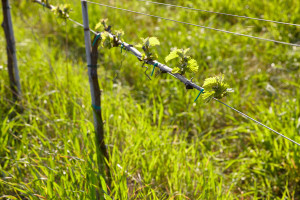 The first natural herbicide is now available on the market. The name is Beloukha and the company that manufactures the product is called Jade. Beloukha is a fatty acid derived from rapeseed oil. Spraying with the product gives the vineyard protection against weeds around three weeks depending on weather conditions.
The first natural herbicide is now available on the market. The name is Beloukha and the company that manufactures the product is called Jade. Beloukha is a fatty acid derived from rapeseed oil. Spraying with the product gives the vineyard protection against weeds around three weeks depending on weather conditions.
For best results spraying should be done by beautiful weather and a minimum temperature of 15 degrees C. Currently Beloukha is not allowed for organic growers. But if the product is as safe as the manufacturer claims it shouldn’t be long before it is. Maybe this product arrives at the right time. Several herbicides are on EU’s new list of dangerous products that should be phased out, including glyphosate found in the well-known Roundup. Read more on jade-international.fr (pdf).
Too much alcohol in the wine? Change the yeast!
People sometimes complain that there is too much alcohol in wine. In a warm climate, however, it is not always easy to produce wines with lower alcohol content. When ripe grapes, rich in sugar, ferment to a totally dry wine, the alcohol level often reaches 14 or 14.5%. But now research has come one step closer to identifying different yeasts strains that ferment all the sugar in the must to a lower alcohol level.
More research is needed, however, but experiments with Shiraz and Chardonnay in Australia has produced wines with 1.8% lower alcohol content. Read more about this research on decanter.com.
Fire in Constantia, South Africa, vineyards threatened
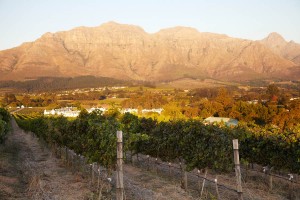 In South Africa, a huge fire raged in early March that struck the vineyards of Constantia, among others. Fortunately, many had already harvested some of their grapes. It seems that the damage in the vineyards, after all, is rather limited after great efforts by both firefighters and volunteers.
In South Africa, a huge fire raged in early March that struck the vineyards of Constantia, among others. Fortunately, many had already harvested some of their grapes. It seems that the damage in the vineyards, after all, is rather limited after great efforts by both firefighters and volunteers.
Constantia is situated on the Cape Peninsula, not far from Cape Town. Here we find fabulous wineries like Buitenverwachting, Steenberg and High Constantia and of course the classic Groot Constantia and Klein Constantia. The latter is famous for its sweet Muscat wine Vin de Constance. Read more on the big fire on winespectator.com.
Do you want to join us on a fabulous tour of South Africa? Our program for the next wine tour to South Africa in March 2016 will soon be published (until then the 2015 program is available).
Alessandro Veglio Barbera d´Alba 2011 | Birgitta’s Wine of the Month
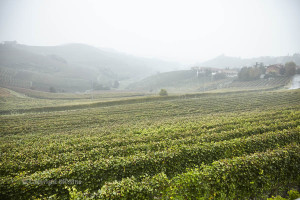 The Barbera grape gives wines with high acidity and soft tannins. This wine from the Piedmont has a dense deep red colour and is a very good illustration. The nose has plenty of dark fruit, some autumn leaves and spices. On the palate I find blue-berries and other dark berries. It is quite full-bodied with a lot of extract. 14.5% alcohol. A distinct acidity gives it a good balance. There is also a hint or impression of sweetness in the end, perhaps coming from the alcohol or the compact fruit.
The Barbera grape gives wines with high acidity and soft tannins. This wine from the Piedmont has a dense deep red colour and is a very good illustration. The nose has plenty of dark fruit, some autumn leaves and spices. On the palate I find blue-berries and other dark berries. It is quite full-bodied with a lot of extract. 14.5% alcohol. A distinct acidity gives it a good balance. There is also a hint or impression of sweetness in the end, perhaps coming from the alcohol or the compact fruit.
Perhaps it was in a fit of exuberance that I served it with a Saturday evening lasagne, but it was perfect with the well-aged parmesan cheese. Should also be perfect to Easter time lamb chops on the grill. Price around 20 euro.
Languedoc and organic wine books in the press
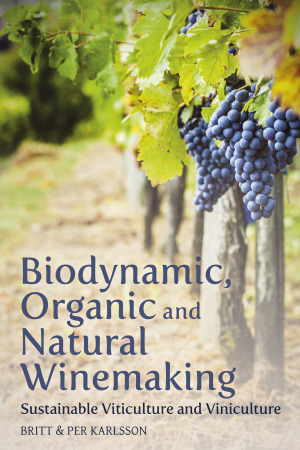 Two of our books were recently mentioned in the press. The first was our book on the wines from the Languedoc region, a wine district that is a treasure trove for those who look for exciting wines at modest prices. We wrote the book in 2007 but the producer recommendations in it are still very valid. (But many new talents have popped up since.) The other book we have seen mentions of is the English langue edition of our book on organic, biodynamic and natural wines, mentioned both in the Netherlands and in Great Britain (by a Master of Wine):
Two of our books were recently mentioned in the press. The first was our book on the wines from the Languedoc region, a wine district that is a treasure trove for those who look for exciting wines at modest prices. We wrote the book in 2007 but the producer recommendations in it are still very valid. (But many new talents have popped up since.) The other book we have seen mentions of is the English langue edition of our book on organic, biodynamic and natural wines, mentioned both in the Netherlands and in Great Britain (by a Master of Wine):
[divider_flat]
California against France, who makes the best wine?
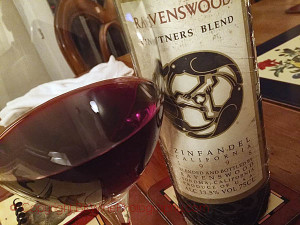 Roberson Wine, an English wine company that also has an online store that even sells to Sweden, presented the challenge: France against California. Inspired by the legendary tasting in Paris in 1976, or perhaps taking it mainly as a pretext, they presented a number of top wines from these two wine countries, both red and white. BKWine Magazine’s Carl-Erik Kanne participated in this gladiatorial combat.
Roberson Wine, an English wine company that also has an online store that even sells to Sweden, presented the challenge: France against California. Inspired by the legendary tasting in Paris in 1976, or perhaps taking it mainly as a pretext, they presented a number of top wines from these two wine countries, both red and white. BKWine Magazine’s Carl-Erik Kanne participated in this gladiatorial combat.
Read Karl-Erik’s article and his verdict on BKWine Magazine: California challenges France. A duel of giants. [divider_flat]
Great Bordeaux wines that you can afford to drink
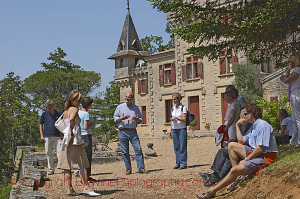 You can actually find a great many chateaux in Bordeaux in the middle price range, quite affordable. Some of them have joined together in joint marketing effort called le Grand Cercle des vins de Bordeaux. BKWine Magazine’s Wilhelm Arnör was at their presentation and found three chateaux that were particularly to his liking: Chateau Dalem, Chateau de Pressac and Chateau Tournefeuille.
You can actually find a great many chateaux in Bordeaux in the middle price range, quite affordable. Some of them have joined together in joint marketing effort called le Grand Cercle des vins de Bordeaux. BKWine Magazine’s Wilhelm Arnör was at their presentation and found three chateaux that were particularly to his liking: Chateau Dalem, Chateau de Pressac and Chateau Tournefeuille.
Read all of Wilhelm’s article on these three exciting producers on BKWine Magazine: Three great buys from Bordeaux in classic style. [divider_flat]
Should one boycott Champagne?
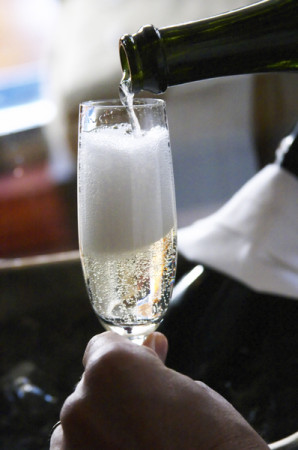 “Champagne Jayne” is the name that Jayne Powell uses for her wine tasting and wine promotion activity in Australia. Or at least it has been until recently. The Champagne growers and makers association CIVC is suing her for using the name “Champagne” in her activity. They have taken her to court in Australia and may very well put her entirely out of business.
“Champagne Jayne” is the name that Jayne Powell uses for her wine tasting and wine promotion activity in Australia. Or at least it has been until recently. The Champagne growers and makers association CIVC is suing her for using the name “Champagne” in her activity. They have taken her to court in Australia and may very well put her entirely out of business.
She is a big enthusiast for champagne and a very vocal promoter and educator on champagne. But she does not hide the fact that other sparkling wines exist. Sometimes she even mentions them. The champagne producers’ organisation does not like that. So it has taken her to court!
Read more on this ignoble behaviour towards someone who is a great promoter of champagne in Jim Budd’s guest article on BKWine Magazine (Jim is author of the very widely read blog Jim’s Loire and the new chairman of the Circle of Wine Writers.): Will the Champagne growers (CIVC) force a great supporter, Champagne Jayne, into bankruptcy with their bullying?[divider_flat]
Time for a rosé? Fashion wine or luxury wine? Both!
The consumption of rosé wines have had a big boost in recent years. To some extent this can be explained by the much improved quality but it is no doubt also a trend that has been inflated by skilful marketing. Rosé has become so popular that the wine producers in Provence, the most rosé of all regions, more and more switch over to make rosé and reduce their production of white and red wine. In two articles Britt gives a background to the success of rosé wine and then talks about what may be the world’s most expensive rosé. Read more on the on BKWine Magazine. Both articles have been published on Forbes:
A Barolo in Piedmont called Borgogno
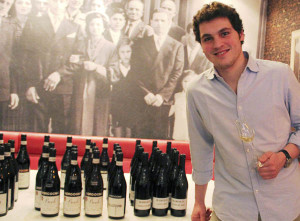 Borgogno is a wine producer Barolo in Piedmont with a long history. It changed hands in 2008. Following the change of ownership, the quality of the wines has continued to rise. When the winemaker Andrea Farinetti came to Sweden to present his wines he met with BKWine Magazine’s Ola Öhlund.
Borgogno is a wine producer Barolo in Piedmont with a long history. It changed hands in 2008. Following the change of ownership, the quality of the wines has continued to rise. When the winemaker Andrea Farinetti came to Sweden to present his wines he met with BKWine Magazine’s Ola Öhlund.
Read Ola’s full article on BKWine Magazine: Borgogno, a Piedmont wine producer with a reboot. [divider_flat]
Cult? Natural? Who cares, it’s just good Burgundy wines!
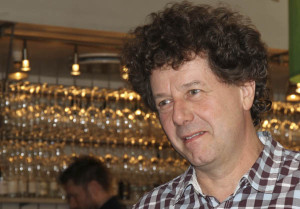 It is not unusual for a wine producer in Burgundy to make quite a few different wines. But to have 30 wines in the portfolio, as does Philippe Pacalet, is perhaps a bit above the average. In his range you can find wines from Chablis in the far north down to the southern parts of the Côte d’Or. Sometimes he is categorised as a “natural” winemaker (minimalist or primitive might be better words) and his wines are by some considered to be “cult wines”.
It is not unusual for a wine producer in Burgundy to make quite a few different wines. But to have 30 wines in the portfolio, as does Philippe Pacalet, is perhaps a bit above the average. In his range you can find wines from Chablis in the far north down to the southern parts of the Côte d’Or. Sometimes he is categorised as a “natural” winemaker (minimalist or primitive might be better words) and his wines are by some considered to be “cult wines”.
When Pacalet came to Sweden he met with BKWine Magazine’s Peter Cronström. Read Peter’s report from the tasting here: Delicious Burgundy wines from Philippe Pacalet. [divider_flat]
Don’t be an egoist! Share with your friends and other wine enthusiasts! Forward the Brief to your friends! Suggest that they sign up for a free subscription !
© Copyright BKWine







